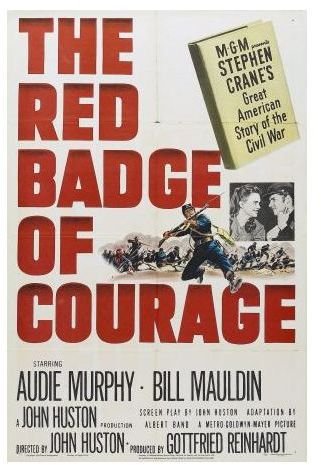Red Badge of Courage Symbolism
A Quick Word on Symbolism
There are four levels to mastering symbolism.
- Knowing that symbolism means the representation of abstract concepts through the use of concrete items is a level 1 understanding of symbolism. This level can be accomplished by anyone with the ability to memorize. Your study of symbolism in the Red Badge of Courage must go beyond level 1 to make it useful.
- Being able to identify symbolism is level 2. Although this skill will benefit your understanding of the novel you read, it has little relevance outside of a study of literature.
- Identifying symbols and understanding what the symbol contributes to the overall theme of the novel, poem, short story, or play takes your learning to the next level. This skill involves higher level thinking and not only enhances your understanding and enjoyment of literature, it develops the brain power necessary for “real world” success.
- A level four understanding of symbolism involves the ability to use symbolism in your own writing in order to make ideas more clear (or less clear). This enhanced ability to communicate pays lifelong dividends.
These levels of mastering symbolism should be kept in mind as you examine Red Badge of Courage symbols.
Top 7 Symbols
There are very few symbols in The Red Badge of Courage, owing to Stephen Crane’s desire to create a realistic account of war. The following list containing Red Badge of Courage symbolism is limited but useful.
(1) The Red Badge of Courage
Henry calls the soldier’s wounds in chapter 9 a “red badge of courage.” He literally means physical wounds; A red badge of courage, however, can also represent emotional wounds.
Take, for example, Henry’s head wound, suffered not as a result of battle, but as a result of cowardice. Even after Henry’s triumph in battle, he still looks on his cowardly behavior with a sense of shame and regret.
The battle itself symbolizes each person’s individual battles in life, the propensity to run in the face of fear, stopping short of one’s goal, and being resentful of those who have succeeded.
(2) The Dead Soldier
Henry comes across a decaying soldier, covered with ants, completely stripped of his identity. The soldier represents the futility of mortal accomplishments, all of which mean nothing after death.
(3) The Color Red
Crane mentions the color red several times. Possible interpretations include the fires of hell, eyes of demons, and blood.
(4) Dragons
Henry repeatedly envisions the enemy as dragons. Whether it’s an extension of the romanticized tales he read growing up or a deeply psychological portrayal of an enemy he feels is unbeatable is not explicit.
(5) Nature
After Henry’s initial battle, he is stunned that the sun is shining and the sky is blue. Crane, being a Naturalist writer, believed nature was indifferent and did not concern itself in man’s affairs.
(6) The Loud Soldier/Wilson
The Loud Soldier loses his loudness after the first battle, symbolizing the maturing process one undergoes in life.
(7) Rain
As Henry laments his initial cowardly behavior and contemplates his personal success in battle, it rains, symbolically washing away past transgressions and opening the way for a new beginning.
Sources
Public domain image courtesy of Wikimedia Commons.
This post is part of the series: Red Badge of Courage Study Guide
Don’t run from a good grade, read this study guide instead.
